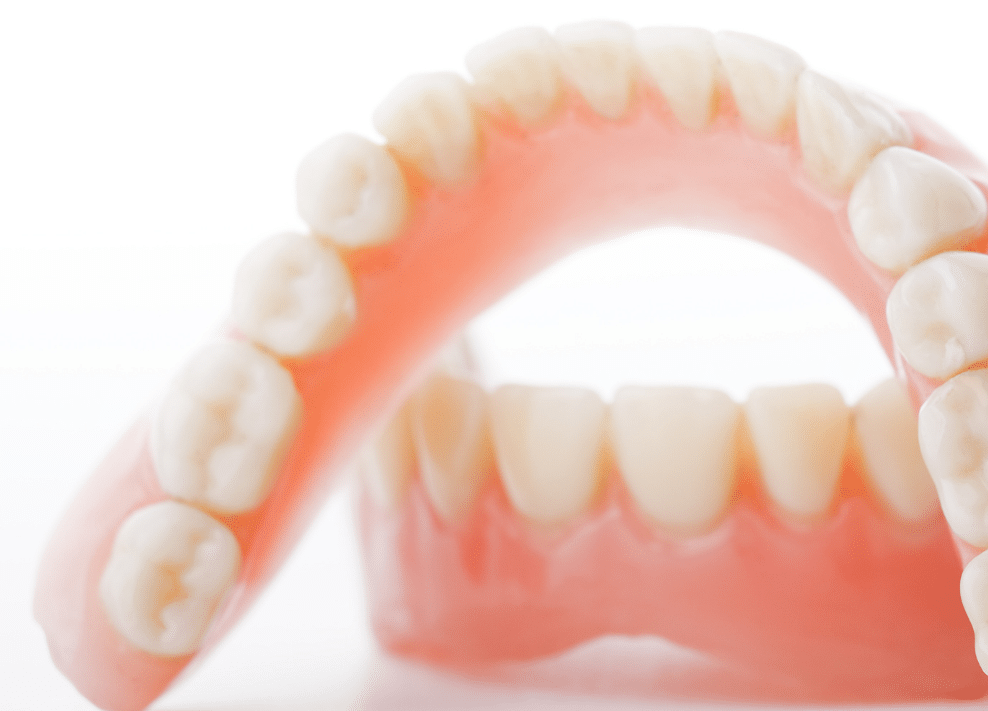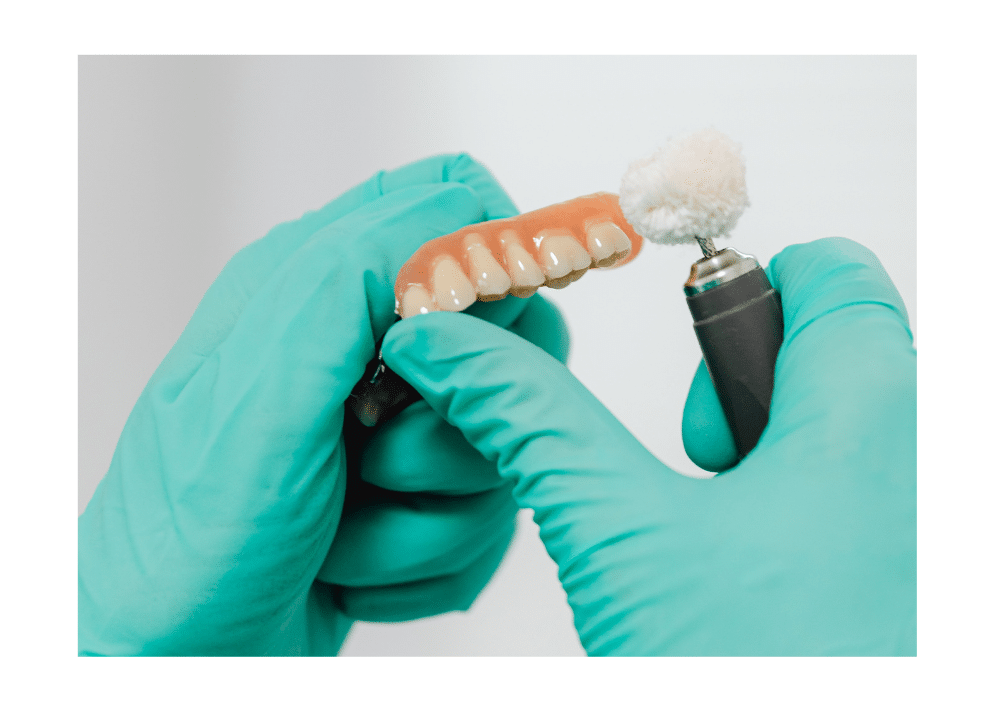What is a denture?
There was a time when most people ended up with dentures. Natural teeth can last a lifetime with proper care. But people still lose teeth for various reasons. That’s where dentures come in. They restore smiles, give a more youthful look to the face and also allow people to eat, swallow and speak with ease.
Dentures are artificial replacements for your natural teeth and gums. If an accident, disease, or poor oral health has left you with only a few healthy natural teeth or none at all, your dentist might suggest dentures to replace your missing teeth.
What are the advantages of dentures?
- Dentures can increase your self-esteem.
- Improve your appearance and smile.
- Dentures support your facial muscles.
- Support from dentures can improve your speech.
- Dentures allow patients to eat food they wouldn’t otherwise be able to eat without teeth.
- Today’s dentures are designed to be functional and comfortable.
- Dentures are easily removed, which allows you to quickly and thoroughly clean them.

Types of dentures
There are two types of dentures: full and partial. Each is made from an impression of the patient’s mouth. A mold is made and the measurements are sent to a lab to be made into permanent dentures. Dentures are secured by attaching to or fitting over any remaining natural teeth or implants.
Partial denture
Partial dentures are also called “removable partial denture prostheses” or simply “partials.” They may be used when nearby teeth are not strong enough to hold a bridge, or when more than just a few teeth are missing.
Partial dentures are made up of one or more artificial teeth, held in place by clasps that fit onto nearby natural teeth. You can take the partial denture out yourself, for cleaning and at night.

Complete denture
Complete dentures are what people sometimes refer to as “false teeth.” Also called “full dentures”, they are used when all of your natural teeth are missing.
Complete dentures are removable as they are held in place by suction. They sometimes can cause soreness at first, taking some time to get used to. But once you are accustomed to the feel and fit of the complete denture, you will be able to eat, speak, and smile with confidence.

Immediate vs conventional dentures
Immediate dentures are made before your teeth are removed. Your dentist takes measurements and makes models of your jaws during your first visit. Once your teeth are extracted, your dentist inserts the immediate dentures. The benefit of immediate dentures is that you are not without teeth during the healing period, which can take up to 6 months. During the healing period, your bones and gums can shrink and your immediate dentures may need to be relined by your dentist for a proper fit.
Conventional dentures are made and inserted into your mouth after your teeth have been extracted and the gums and jaw tissues have healed.

Implant-supported dentures
This type of denture attaches to dental implants which are surgically placed in the jawbone in advance. Implant-supported dentures provide a more secure, dependable option, staying in place and restoring functionality.
The added stability provided by this type of denture can offer various benefits over traditional dentures, including:
- Improved speech and confidence
- Decreased irritation of gum tissue
- Restored proper chewing (which improves digestion and nutritional absorption)
- Minimized gum irritation and wearing down of soft tissue
- Eliminating the need for denture adhesives and their associated cost
- Protection against advancement of bone loss
- Creating 3 times the biting force of traditional dentures, enhancing diet options

The process
Dental examination
The first step is for the dentist to examine the patient’s teeth and determine the state of the patient’s oral health. During this examination, the dentist will search for any signs of infection, tooth decay, previous dental work that can hinder the denture process and search for any other teeth that may need removal prior to placing the dentures.
Fabrication
After the consultation, the dentist will take a mold (impression) of the teeth and measurements to ensure that the dentures fit the mouth and any remaining teeth exactly. These measurements and impression are sent to a dental lab that will build the dentures to the dentist’s specifications.
Fitting
Once we have the completed dentures, the patient will come back to our office for a fitting. We will make sure that the individual can use the dentures without pain or issue. If necessary, the dentist will make adjustments to the dentures during this appointment.

Getting used to your denture
While there will be no pain, it may take some time to adapt to wearing the dentures. It may take some time to adapt to eating and speaking with the dentures, but eventually, the denture will provide you with the same function and control as wit regular teeth.
